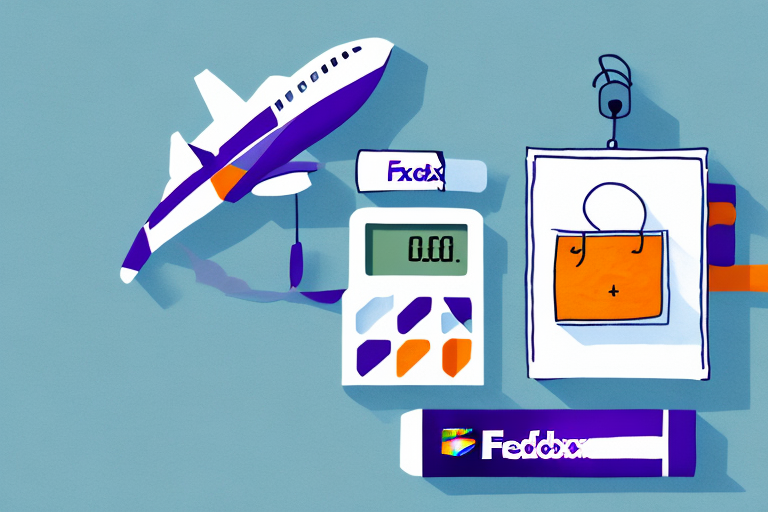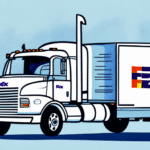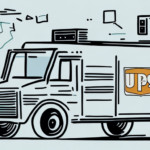Understanding FedEx's Overweight Charge Policy
FedEx imposes additional fees for packages that exceed the weight limits specified for the chosen shipping service. These weight limits vary based on the service type and destination, making it crucial to consult FedEx’s official guidelines for accurate information. The overweight fee is calculated based on both the excess weight and the shipping distance. Moreover, if a package is too heavy or large to be processed by FedEx’s automated systems, an extra surcharge may apply.
It's important to distinguish between overweight and oversized package policies. While overweight refers to exceeding the weight limit, oversized pertains to surpassing dimensions like length, width, or height. Both can incur additional fees, so always verify both weight and size restrictions to prevent unexpected charges.
For frequent shippers nearing or exceeding weight limits, FedEx offers freight shipping options tailored for larger and heavier shipments, which can be more economical in the long run. Contact FedEx for more details on freight solutions.
Accurately Measuring, Weighing, and Packaging Your Packages
Measuring and Weighing Your Packages
Accurate measurement and weighing of packages are essential to avoid overweight charges. Utilize a reliable scale and a measuring tape to determine the exact weight and dimensions of your shipment. Don’t forget to account for any additional packaging materials that may add to the total weight.
FedEx provides resources and tutorials on their website to guide you through the proper measuring and weighing processes. Ensuring precision in these measurements can help you select the most appropriate shipping method and avoid unnecessary fees.
Packaging Options to Reduce Weight
Choosing lightweight packaging materials is a key strategy to keep your package within the weight limits. Consider using bubble mailers instead of boxes or opting for thinner, lighter cardboard. Additionally, select the smallest possible box that fits your items to minimize unnecessary weight and potential charges.
Removing excess packaging, such as retail boxes or additional fillers, can significantly reduce the package’s weight. Properly sealing your package with strong packing tape and using cushioning materials like bubble wrap or packing peanuts can protect your items without adding excessive weight.
Utilizing FedEx's Online Tools and Shipping Options
FedEx's Online Shipping Tools
FedEx offers a suite of online tools designed to help you estimate shipping costs, print labels, and track packages. These tools enable you to calculate the weight and size of your package, providing an accurate quote before you ship. This proactive approach allows you to choose the most cost-effective service and avoid unexpected overweight charges.
One valuable feature is the ability to compare rates across different services, such as FedEx Ground, FedEx Express, and FedEx Freight. Additionally, scheduling a pickup directly from your location saves time and ensures convenience.
Flat-Rate Shipping Options
For those who frequently ship heavy or bulky items, FedEx’s flat-rate shipping options can be a cost-effective alternative. These options allow you to ship packages of predetermined weights and sizes for a fixed price, eliminating the worry of variable overweight fees.
Flat-rate shipping also streamlines the shipping process by removing the need for detailed cost calculations. FedEx provides free packaging materials for these services, further reducing your shipping expenses.
Strategies for Saving Money and Avoiding Overweight Charges
Shipment Consolidation Services
FedEx offers shipment consolidation services that allow you to combine multiple smaller packages into one larger shipment. This can lead to significant savings on shipping costs and help you stay within weight limits, thereby avoiding overweight charges.
Before utilizing this service, ensure that your shipments meet FedEx’s specific requirements and guidelines. Consolidation is ideal for businesses that frequently send multiple packages simultaneously.
Third-Party Shipping Services
Using third-party shipping services can sometimes offer more flexible options for managing heavy shipments. These services may provide additional benefits such as enhanced tracking, insurance, or customized packaging solutions.
However, it's important to weigh the pros and cons, as third-party services might come with their own set of fees and longer delivery times. Research the reliability and reputation of any third-party provider before entrusting them with your shipments.
Handling Overweight Charges: Negotiating and Appealing
Requesting Waivers or Discounts
If you receive an overweight fee that you believe is unjustified, you can request a waiver or discount from FedEx. Provide a valid reason and any supporting documentation to strengthen your case. Contact FedEx customer service promptly to discuss your options.
Appealing Unfair Charges
In cases where you believe the overweight charge is incorrect, you have the right to appeal. Gather all necessary documentation, such as weight logs and shipment details, and submit an appeal through FedEx’s official channels. A thorough review of your case may lead to the waiver of the disputed fee.
Additionally, consider enrolling in FedEx’s loyalty programs if you are a frequent shipper. These programs can offer discounts and benefits that reduce the likelihood of incurring overweight charges.
Common Mistakes to Avoid and Best Practices
Double-Checking Shipments
Always verify the weight and dimensions of your package before shipping. Mistakes in measurement can lead to unexpected overweight fees and delays in transit. Utilize reliable scales and measuring tools to ensure accuracy.
Proper Packaging
Use sturdy and appropriate packaging materials to protect your items during transit. Inadequate packaging can result in damage, which may incur additional fees or loss of the shipment. Invest in high-quality packaging materials and secure your items adequately to prevent movement during shipping.
By adhering to these best practices, you can minimize the risk of incurring overweight charges and ensure a smooth shipping experience with FedEx.
Conclusion
By implementing these strategies—understanding FedEx’s policies, accurately measuring and packaging your items, utilizing online tools, and exploring cost-saving options—you can effectively avoid overweight charges. Additionally, knowing how to negotiate and appeal charges when necessary further safeguards your shipping budget.
For more detailed information and the latest updates on FedEx’s shipping policies, visit FedEx’s official website or consult with a FedEx representative. Staying informed and proactive in your shipping practices will help you manage costs and ensure your packages are delivered efficiently and affordably.




















